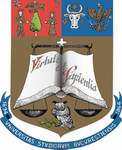| |
 |
UNIVERSITY OF BUCHAREST
FACULTY OF PHYSICS Guest
2025-12-07 19:01 |
 |
|
|
|
Conference: Bucharest University Faculty of Physics 2024 Meeting
Section: Nuclear and Elementary Particles Physics
Title:
Forward-Backward Asymmetry Coefficient in Slow Neutrons Capture by 109Ag Nucleus
Authors:
Cristiana Oprea(1), Alexandru Ioan Oprea(2)
Affiliation:
1. National College "Emanuil Gojdu" Oradea, Bihor, Romania
2. Technical College "Alexandru Roman", Alesd, Bihor, Romania
E-mail
coprea2005@yahoo.co.uk
Keywords:
Angular correlation, symmetry breaking effects, forward-bacward coefficient, neutrons capture
Abstract:
Angular distributions in the 109Ag(n,gamma)110Ag reaction were evaluated in the framework of resonant-resonant approach and two-levels approximation. Angular correlation is a pondered sum of Legendre polynomial with coefficients that depend on the energy of neutrons, widths of neutrons gamma quanta, phases and other parameters. These coefficients are of interest in the evaluation of asymmetry and parity-breaking effects in slow neutrons induced processes.
Computer modeling has been done to evaluate the influence of experimental conditions on the angular distribution and forward-backward asymmetry effect. The computer evaluation took into consideration the target's dimensions, attenuation of neutrons and gammas, the flux of incident neutrons, and other parameters. Analytical expression of the polar angle was also obtained by the Direct Monte-Carlo method. Computer analyses have shown that more than 10% of the gamma quanta are lost in the target for a thickness of 2 mm. In the case of a 10% forward-backward coefficient, edge effects can be neglected. For asymmetry and parity breaking effects, gamma attenuation, edge effects and target dimensions become significant at values below 0.1.
For neutrons at around 32 eV,
forward-backward effect is approximately 0.21. Absolute errors of the forward-backward effect were also derived under various experiment settings and cross-section experimental precisions
|
|
|
|